Category — 3.2 The “O” Professionals
Orthopaedic Surgeon (“Bones and Muscle” Surgeon)
An orthopedic surgeon is a medical doctor who specializes in the study of human bones and muscles (musculo-skeletal conditions). This specialist examines, diagnoses and treats conditions and diseases of the bones and muscles that are usually the result of congenital anomalies (see full Glossary), trauma, infections and tumors.
Orthopedic surgeons usually examine and treat conditions related to the following body parts:
- Spine;
- Hands and feet;
- Arms and legs (Fig. 1);
- Knees and elbows.
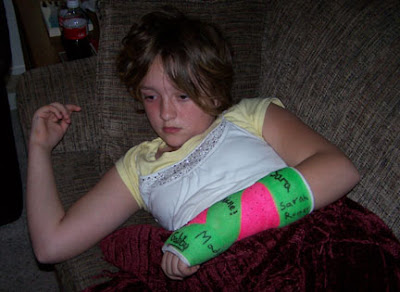
Figure 1. Arm fracture
Orthopedic surgeons usually work with children who have conditions such as cerebral palsy and spina bifida.
In addition to diagnosing and treating bone and muscle disorders and conditions, orthopedic surgeons perform surgical procedures to fix or lessen the impact of certain conditions. They also work closely with physiotherapists and occupational therapists, especially when it comes to use of adaptive equipment such as wheelchairs, walkers or splints (Fig. 2).
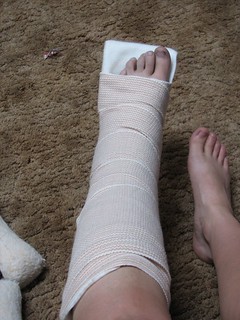
Figure 2. Using splints
see References
January 30, 2012 No Comments
Ophthalmologist or Eye Doctor
An ophthalmologist is a medical doctor who specializes in the eye and the areas around the eye (Fig. 1). Such areas include the eyelids and visual pathways. This specialist conducts full eye examinations, diagnoses eye diseases, prescribes medication and offers other treatment options (such as wearing an eye patch) for children and adults with eye diseases. Ophthalmologists also prescribe prescription glasses and contact lenses to their patients.
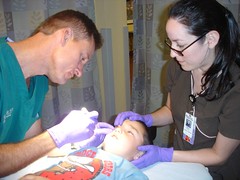
Figure 1. Eye doctor
Ophthalmologists often work with children who have conditions/disorders that include:
- Down syndrome;
- Blindness or low vision (Fig. 2);
- Deafblindness;
- Cerebral palsy.
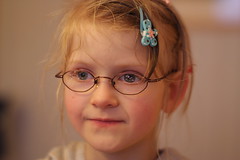
Figure 2. A girl wearing glasses
see References
January 30, 2012 No Comments
Occupational Therapist
Occupational therapists or OTs work with children who have difficulties with their muscles. OTs help children improve the muscles that will make it possible for them to be as independent as possible. OTs work on helping children to improve their fine motor skills, and therefore their quality of life. Specifically, OTs help children with:
- Eye/hand coordination (Fig. 1);
- Eating (with one’s hands or with utensils such as forks and chopsticks);
- Drinking and swallowing;
- Dressing and undressing;
- Writing, drawing and painting (Fig. 2);
- Bathing and grooming;
- Toileting.
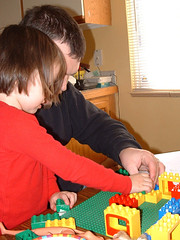
Figure 1. Eye/hand coordination

Figure 2. A boy painting
OTs work with children who have motor impairments (such as cerebral palsy and spina bifida), muscle tone (see ECI Glossary) difficulties (such as Down syndrome and FASD), and trouble with muscle coordination.
OTs work with children individually or in groups. They offer therapy sessions to individual children, and often act as consultants in school settings.
OTs work very closely with the children’s parents and make suggestions about how parents can make adaptations to their homes to maximize their children’s independence.
OTs are usually an integral part of many Individual Education Plan (IEP) (see full Glossary) teams. They serve on the team, offer information about whatever condition the child has, make recommendations to teachers and parents, and offer advice and suggestions about adaptive equipment. Such adaptive equipment includes adaptive pens and pencils, scissors, rulers and paint brushes.
OTs with special training in sensory integration therapy are called sensory integration specialists. They work with children who have sensory processing difficulties.
For more information (and an informational video) about OT, please visit the following website.
see References
January 29, 2012 No Comments